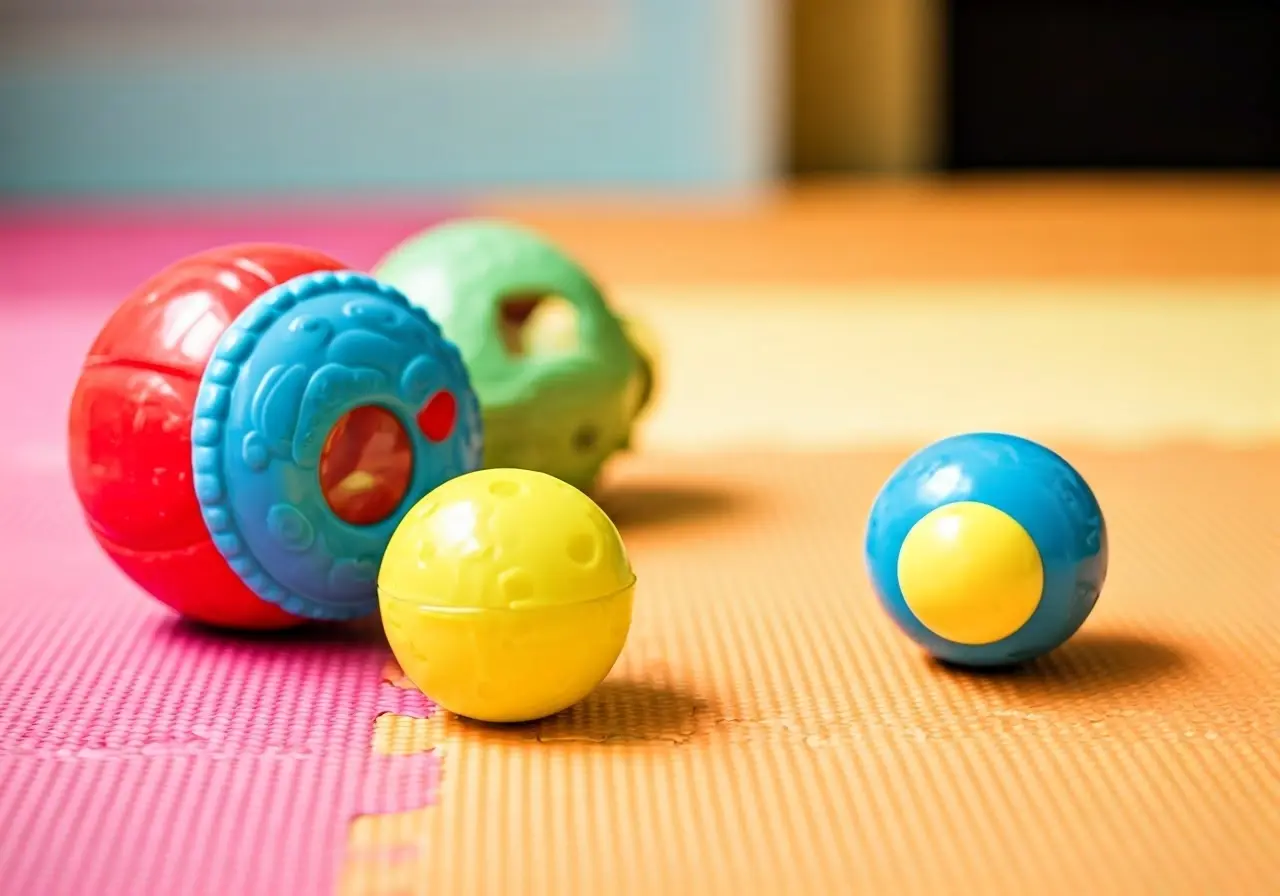Creating an engaging and stimulating environment for your baby can have a profound impact on their development. A stimulating space can encourage exploration, promote learning, and support cognitive and motor skill development. This blog will guide you through simple yet effective ways to create the perfect playful setting for your little one.
Understanding the Importance of a Stimulating Environment
A stimulating environment plays a critical role in your baby’s sensory development. It encourages them to explore their surroundings, which in turn helps with brain development and the growth of neural connections. By understanding its importance, you can better cater to your child’s developmental needs.
Think of your baby’s environment as their first classroom. The textures, sounds, and sights they encounter are all educational tools that help them make sense of the world. As they touch a soft rug or hear the jingle of a bell, their brain is hard at work, forming new pathways and connections. This early stage is crucial, as a more diverse environment leads to a more enriched brain development process. The early years, filled with exploration and discovery, lay the groundwork for future learning.
Choosing the Right Colors and Textures
Babies are highly receptive to bright colors and various textures. These elements attract their attention and encourage them to explore. Opt for colorful, textured toys and accessories that will captivate their senses and stimulate visual learning.
Consider integrating colorful mobiles or soft, textured blankets into their play area. Interestingly, high contrast colors, like black and white, are especially beneficial for newborns, as they help to develop their sight since babies don’t initially see color. As they grow, introduce a spectrum of colors and materials, from smooth wooden blocks to plush stuffed animals, to enhance their tactile and visual exploration.
Introducing different textures isn’t just about toys. Floor mats with varied feels and surfaces can also encourage crawling and movement. This physical interaction with their environment not only fortifies muscle strength but also boosts spatial awareness and coordination. By encouraging these early movements, you’re supporting the development of motor skills which are fundamental to their progression.
Incorporating Interactive and Educational Toys
Toys that encourage interaction, such as blocks or musical toys, can be incredibly beneficial for your baby’s cognitive growth. These toys challenge their problem-solving skills and enhance hand-eye coordination. Choose toys that can grow with your child, offering multiple stages of play.
Interactive toys are not just about entertainment—they’re about learning. Toys like shape sorters or stacking cups can help teach babies about object permanence and cause-and-effect relationships. Even a simple game of peek-a-boo lays the foundation for understanding that objects continue to exist even when out of sight. Providing a mix of these types of toys ensures that your child not only has fun but gains valuable learning experiences along the way.
Musical toys, in particular, offer multi-sensory stimulation, enhancing both auditory and tactile development. Introducing them to a toy piano or a tambourine can cultivate an early interest in music while refining their auditory processing abilities. Such toys provide a wonderful opportunity for interactive learning experiences where your baby can experiment with different sounds and rhythms.
Designing a Safe and Comfortable Space
Safety should be your top priority when setting up a play environment. Ensure the area is free from hazards, with soft surfaces for falls. A comfortable, clutter-free space allows your baby to move freely and explore without restriction.
When planning this space, think of it as your child’s personal sanctuary. Begin by child-proofing the area—secure any furniture that could topple, cover sharp edges, and ensure any electrical outlets are out of reach or safely covered. Remember, children are natural explorers, so keeping potentially dangerous items out of reach is crucial.
Comfort is as important as safety. Use non-toxic, hypoallergenic materials for any textiles within the space. An adequately cushioned floor surface can make all the difference, ensuring that your little one has a soft landing when those inevitable stumbles occur. A well-designed space supports emotional security and encourages them to focus on playful exploration.
Lighting also plays a pivotal role in creating a soothing environment. Soft, natural lighting can be calming for babies and can help regulate their circadian rhythms. Consider using sheer curtains to diffuse harsh sunlight and reduce glare. This gentle ambiance promotes a sense of tranquility and can even aid in naptime routines, ensuring a well-balanced daily rhythm.
Engaging with Nature and Outdoor Exploration
Introducing your baby to nature can be a wonderful way to engage their senses. Outdoor play provides new sights, sounds, and textures that indoor settings can’t replicate. Simple activities like rolling on grass or listening to birds can be both calming and stimulating.
Regular exposure to the outdoors not only introduces your baby to a wealth of sensory inputs but also helps them connect with the natural world. Fresh air and sunlight have numerous benefits, including improving sleep and boosting vitamin D levels, essential for healthy bone development. Engaging with nature can elevate their mood and encourage a sense of wonder about the world around them.
Consider designating a special corner of your garden or a park as your baby’s exploration zone. Toys like sandbox or water play stations can introduce them to different elements of nature while keeping them engaged for longer periods. Even small elements like wind chimes or a bird feeder can add to the experience, teaching them about sounds and animal behaviors in a subtle yet impactful way.
Bringing it All Together for Your Baby’s Growth
Creating a stimulating environment for baby play doesn’t have to be complicated or expensive. By incorporating a variety of textures, colors, and interactive elements, you can create an enticing space that fosters your baby’s growth and curiosity. Remember, the most important thing is to create a safe and welcoming environment where your baby feels loved and encouraged to explore.






















































































